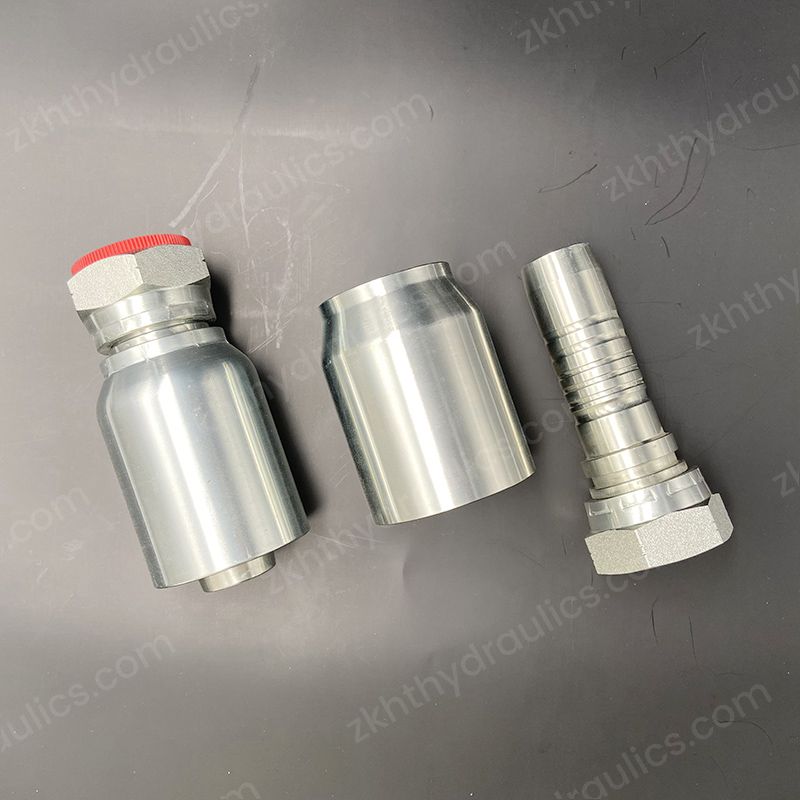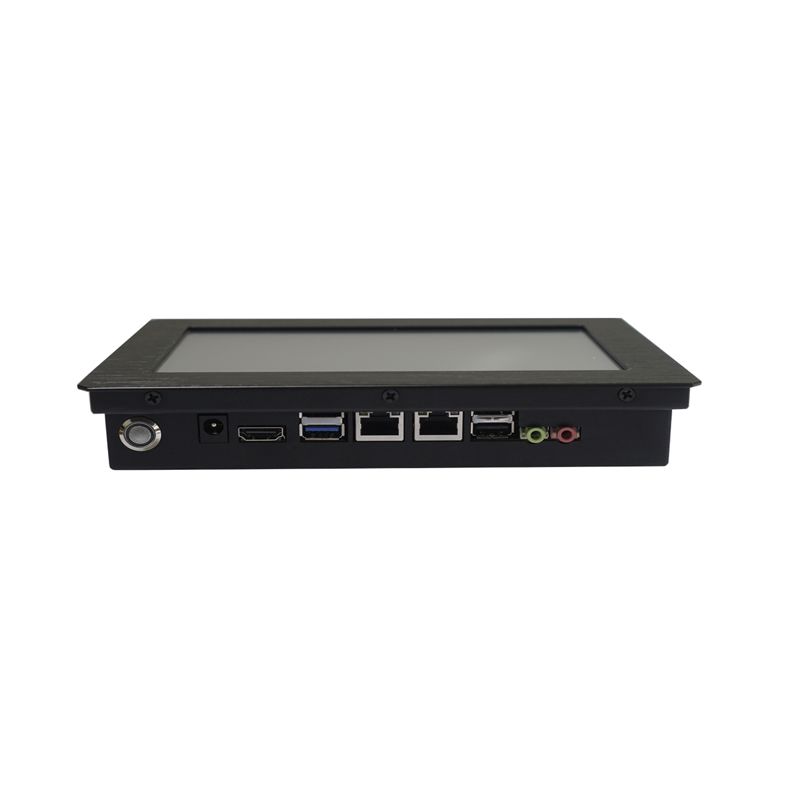Advantages of High-Quality Hydraulic Hose Fittings
Jun. 12, 2024
Hydraulic hose fittings may not be something you think about daily, but they play a crucial role in the smooth operation of hydraulic systems across various industries. These seemingly small components are vital for connecting hoses to various parts of the hydraulic system, ensuring the safe and efficient flow of hydraulic fluid. But what exactly are hydraulic hose fittings, and why are they so important?
What is Hydraulic Hose Fitting?
Hydraulic hose fittings are connectors that join hydraulic hoses to other hydraulic components like pumps, cylinders, and valves. They ensure a secure and leak-free connection that can withstand high pressures.

Hydraulic systems rely on the seamless transfer of fluid to perform tasks such as lifting, moving, and pressing. Without reliable hose fittings, these systems would fail to operate effectively, leading to potential downtime and costly repairs.
Components of Hydraulic Hose Fittings
Understanding the key components of hydraulic hose fittings can help you appreciate their functionality and importance.
Hoses
Hydraulic hoses are flexible tubes designed to transport hydraulic fluid. They are made from materials that can withstand high pressure and are often reinforced with layers of braided fabric or metal.
Fittings
Fittings are the connectors that attach hoses to other components. They come in various shapes and sizes to match different hose types and system requirements.
Connectors
Connectors, sometimes referred to as couplings, join two fittings or connect a fitting to another component. They ensure a secure and leak-free link within the hydraulic system.
Types of Hydraulic Hose Fittings
There are several types of hydraulic hose fittings, each suited for specific applications and requirements.
Threaded Fittings
These fittings have threads that screw onto corresponding threads on the hose or component. They are common in high-pressure applications due to their strong connection.
Flanged Fittings
Flanged fittings use a flat, flange-like surface to create a secure connection. They are often used in larger hydraulic systems where a robust connection is needed.
Crimp Fittings
Crimp fittings are attached to the hose using a crimping tool, which compresses the fitting onto the hose. This type of fitting provides a strong, permanent connection.
Push-On Fittings
Push-on fittings are easy to install and remove, making them ideal for applications where hoses need to be frequently changed or replaced.
Materials Used in Hydraulic Hose Fittings
Hydraulic hose fittings are made from a variety of materials, each offering different benefits.
Metals
Metals like steel, stainless steel, and brass are commonly used due to their strength and durability. Stainless steel, in particular, offers excellent corrosion resistance.
Polymers
Polymers such as nylon and polyethylene are used for their lightweight and flexibility. They are often employed in applications where weight and flexibility are critical.
Composites
Composite materials combine the strengths of multiple materials, offering enhanced performance characteristics. These are used in specialized applications requiring unique properties.
How to Choose the Right Hydraulic Hose Fitting
Selecting the correct hydraulic hose fitting is crucial for the efficiency and safety of your hydraulic system. Here are some factors to consider:
Pressure Ratings
Ensure the fitting can handle the maximum pressure of your system to prevent failures and leaks.
Temperature Compatibility
Choose fittings that can withstand the operating temperature range of your hydraulic system.
Fluid Compatibility
Make sure the fitting material is compatible with the hydraulic fluid used in your system to avoid chemical reactions that could damage the fitting.
Size and Dimensions
Proper sizing ensures a secure fit and optimal performance. Measure the hose and fitting dimensions carefully to match them correctly.
Installation of Hydraulic Hose Fittings
Proper installation is key to the longevity and performance of hydraulic hose fittings. Here’s a simple guide:
Tools Needed
You'll need wrenches, crimping tools, and possibly a hose cutter, depending on the type of fitting you’re installing.
Step-by-Step Guide
Prepare the Hose: Cut the hose to the required length and ensure the ends are clean and free of debris.
Attach the Fitting: Follow the manufacturer’s instructions for attaching the fitting to the hose. This may involve crimping, threading, or pushing on the fitting.
Secure the Connection: Tighten the fitting to ensure a secure, leak-free connection.
Test the System: After installation, test the hydraulic system to check for leaks and proper operation.
Maintenance Tips for Hydraulic Hose Fittings
Regular maintenance can extend the life of your hydraulic hose fittings and prevent unexpected failures.
Regular Inspection
Inspect fittings regularly for signs of wear, damage, or leaks. Early detection can prevent larger issues.
Cleaning and Lubrication
Keep fittings clean and lubricated to prevent corrosion and ensure smooth operation.
Featured content:Unlocking Quality: Stainless Steel Pump Casting Parts Services
How Can Stainless Steel Exhaust Pipes Enhance Performance and Durability?
A Comprehensive Look at Oil Seals Types and How to Measure It
Key Features of Conveyor Table Top Chains
What are the benefits of Mining Straight Bevel Gears?
How Can Longhe Attachment ODM Enhance User Experience Effectively?
Herringbone Gear Pump: The Ultimate Guide to Choosing the Right One
Replacement Guidelines
Replace fittings that show signs of significant wear or damage. Don’t wait for a failure to occur.
Common Problems and Solutions
Even with the best maintenance, problems can still arise. Here are some common issues and their solutions:
Leaks
Leaks can be caused by improper installation, damaged fittings, or worn-out seals. Inspect and replace as necessary.
Wear and Tear
Regular use can lead to wear and tear. Monitor the condition of your fittings and replace them when they become worn.
Improper Installation
Improper installation can lead to leaks and system failures. Always follow the manufacturer’s installation instructions.
Advantages of High-Quality Hydraulic Hose Fittings
Investing in high-quality fittings can provide numerous benefits:
Durability
High-quality fittings are built to last, reducing the need for frequent replacements.
Efficiency
Reliable fittings ensure optimal system performance, reducing downtime and maintenance costs.
Safety
Properly functioning fittings reduce the risk of leaks and failures, enhancing system safety.
Industry Applications of Hydraulic Hose Fittings
Hydraulic hose fittings are used in various industries due to their versatility and reliability.
Construction
Used in heavy machinery like excavators and bulldozers, hydraulic fittings ensure these machines operate efficiently.
Agriculture
Tractors and other agricultural equipment rely on hydraulic systems to perform essential tasks.
Manufacturing
Hydraulic systems are integral to many manufacturing processes, from assembly lines to robotic arms.
Automotive
Hydraulic fittings are crucial in automotive systems, including brakes and power steering.
Environmental Considerations
As industries move towards sustainability, the environmental impact of hydraulic fittings is becoming a concern.
Eco-Friendly Materials
Some manufacturers are now producing fittings from recycled or eco-friendly materials.
Recycling Options
End-of-life fittings can often be recycled, reducing their environmental footprint.
Innovations in Hydraulic Hose Fitting Technology
Technological advancements are driving improvements in hydraulic hose fittings.
Smart Fittings
These fittings come equipped with sensors to monitor performance and detect issues before they become critical.
Improved Materials
New materials are being developed to enhance the durability and performance of hydraulic fittings.
Enhanced Durability
Advancements in manufacturing techniques are producing more robust fittings that can withstand higher pressures and longer use.
Safety Considerations When Working with Hydraulic Hose Fittings
Working with hydraulic systems can be dangerous. Here are some safety tips:
Personal Protective Equipment (PPE)
Always wear appropriate PPE, such as gloves and safety glasses, when working with hydraulic fittings.
Safety Procedures
Follow established safety procedures to prevent accidents and injuries.
Emergency Protocols
Have emergency protocols in place in case of a hydraulic system failure or accident.
Conclusion
Hydraulic hose fittings are the unsung heroes of hydraulic systems, ensuring the smooth and efficient flow of hydraulic fluid. By understanding the types, materials, and proper installation and maintenance of these fittings, you can enhance the performance and longevity of your hydraulic systems. As technology advances, HT Hydraulics can expect even more robust and efficient fittings to emerge, meeting the evolving needs of various industries.
Featured content:Where to Find the Best Tri Lateral Head Unit for Sale?
Top 5 Reasons to Choose a Reliable Pump Body Exporter Today
How Can Herringbone Gears Reduce Noise in Mechanical Systems?
Used Pallet Inverter vs New: Which One Should You Buy?
Industrial Heat Exchangers Explained
Why Choose Mud Pump Herringbone Gear Exporter?
Ultimate Guide to Rotating Tire Clamps: Installation & Benefits
340
0
0
All Comments (0)
If you are interested in sending in a Guest Blogger Submission,welcome to write for us!










Comments